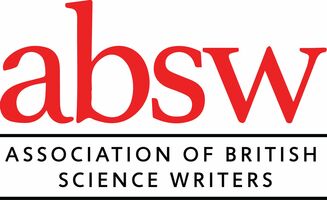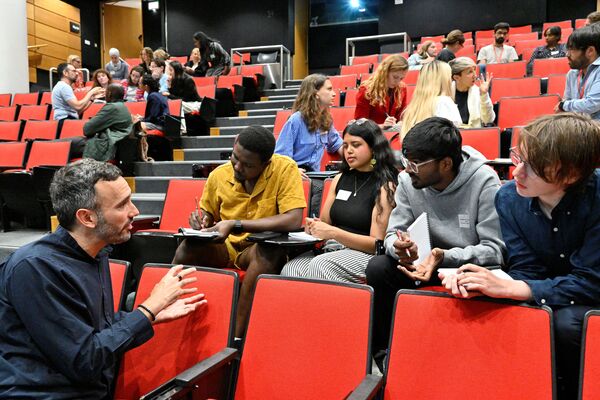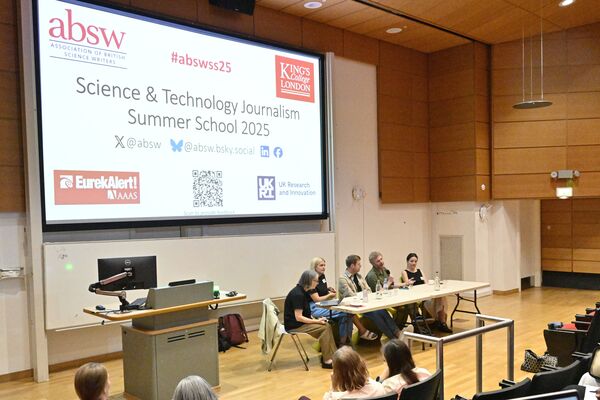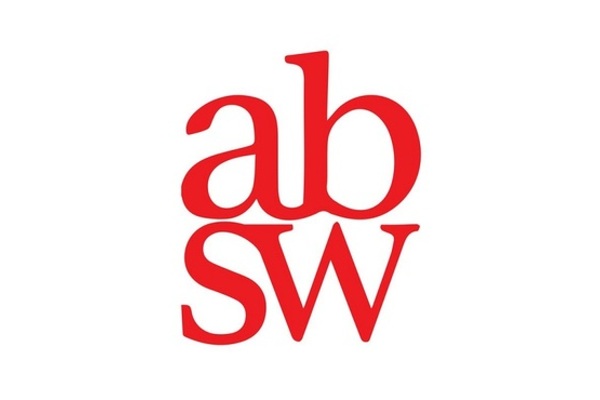Four stages of writing (and a conclusion):
- Finding valuable stories starts with connections
- A catchy headline and framing is the selling point
- Explain it like it’s a dinner party, and consider analogies
- Write at the right time, at the right outlet
- Conclusion: Know what to hold and what to let go
As a beginner science writer with a specialist background, I wanted to learn more about how to identify stories that would appeal to wide audiences and how to present them in a way that can hold the attention of non-specialist readers.
There was some great advice shared about this by the speakers of the ABSW Science & Technology Journalism Summer School 2025 held at King's College London at the end of June.
In this guidance, I have gathered the advice I found most helpful and relevant for writing for non-specialist audiences as a science writer coming from a specialist background.
One important lesson I learned was that sometimes, a piece of research or a specific part of it might be very interesting to me as a specialist, but if it is not interesting or understandable for a non-specialist audience, it can be better to let go of some of the details, or even the whole story.
The advice shared at the ABSW Summer School 2025 for writing to non-specialist audiences can be reviewed in four stages of writing: identifying a valuable story, choosing an attractive title, using a clear and engaging delivery, and writing at the right time and in the right outlet.
Finding valuable stories starts with connections
Identifying what story to pursue is perhaps the most important stage of writing for a general audience. To be able to find good stories, Sarah Wild, a freelance science journalist, emphasised the importance of building connections with researchers. This way, the writer becomes familiar with the scientist’s work and is aware of any important upcoming research papers. Wild advised it is best to connect with scientists in institutions nearby, as proximity facilitates collaborations.
Emma Stoye, Senior News Editor at Nature, shared that ChatGPT can be useful in suggesting scientists working on a specific topic. This can be ideal for identifying nearby researchers who are leaders in their fields and are likely to publish high-impact papers.
Sometimes writers with a science background may be very excited by a development in their field of expertise, but it may be hard for the reader to understand or appreciate. Clare Wilson, science writer at The i Paper, shared a gem on this dilemma during the networking session, saying it is important not to get too attached to a single story, adding: “Sometimes you need to ask yourself if you want to write about research you’re interested in, or write something that will be interesting to many people.”
A catchy headline and framing is the selling point
Many of the speakers emphasised how important the title is as the ‘hook’ that reels the reader in. Alok Jha, Science and Technology Editor at The Economist, put this as: “Think of what makes people turn their heads”, and underlined the importance of ‘framing’ a story in a way that grabs attention. For instance, talking about a condition through a famous person or a historic figure who had it can pique the reader’s interest.
Emma Stoye shared fascinating examples of how a complex scientific paper title can be translated into a captivating news headline. In fact, one example was written by one of the panellists of the Summer School, space journalist Jonathan O’Callaghan, for Nature News. The headline was “Water on Mars: discovery of three buried lakes intrigues scientists”, based on the publication titled “Multiple subglacial water bodies below the south pole of Mars unveiled by new MARSIS data.”
Explain it like it’s a dinner party, and consider analogies
To identify the right language for targeting a general audience, Emma Stoye suggested thinking of it as explaining the topic to a friend at a dinner party. She also recommended using analogies to clarify concepts and expressed that relatable quotes from the scientists themselves can be very powerful.
To ensure that a piece is clear for the reader, a writer may need to leave out parts of the research or the topic that are too niche and would require textbook-like definitions of certain terms. It is important to identify what is absolutely necessary to convey the take-home message and what can and should be left out.
Rachel Brazil, science feature writer for the likes of Nature and Chemistry World, phrased this as: “Let go of what you think is important.”
Clare Wilson shared similar thoughts, advising that it is best to leave extra bits out if they don’t fit the story. She added that this can sometimes mean leaving an interviewee out as the story takes shape.
Panellists also shared that editors often provide help with using the right style for their target audience. Science writer Liam Drew remarked that some outlets allow for a more personal touch, such as a humorous tone, and mentioned how a witty piece in Slate magazine led to a book deal.
Write at the right time, at the right outlet
Timing is everything for news articles, and also very important for feature pieces. If the piece is a news article about a research paper, it should ideally be written before the research paper is even out. Beyond one week is old news, beyond a month is no news, was how Emma Stoye summed it up.
For a feature piece, there should be an answer to “Why now?” emphasised Mun Keat Looi, International Features Editor at BMJ, when talking about the art of pitching. He gave the example of a piece about skin lightening in Nigeria, which was written in response to this issue being declared a health emergency. So, there should be a clear incentive as to why people would find a topic compelling at the time of writing.
Regarding the right place to write, one important learning from the Summer School was that some online journals welcome researchers themselves to write about their own work, such as Aeon and The Conversation, while most science news outlets see this as a conflict of interest.
Conclusion: Know what to hold and what to let go
Writing effectively for a broad audience is not just about simplifying science. It involves making thoughtful decisions at every stage, from selecting the story to choosing the title, refining the delivery, and writing at the right moment. As some of the speakers at the ABSW Summer School talked about, successful science writing sometimes means letting go of details that can weigh a piece down, or dropping stories entirely. Often, the most compelling writing comes not from saying more but from knowing what to omit.
Picture: During the Interview Skills Workshop, participants worked in groups to interviewing scientists from King's College. Credits: Mark Lewis Photography/ABSW

Derya Cavga loves asking questions and writing about science. Her blog on mother and child health research reached up to 150,000 monthly readers in Turkey. Now based in Cambridge, she is shifting her writing into English, pursuing both science communication and creative storytelling. She trained as a molecular biologist and has over a decade of experience in cancer research, including postdoctoral work at the University of Cambridge. You can find her on LinkedIn.
Derya was awarded a Diversity Scholarship 2025.










